[press release]
Canada Post to unveil stamp celebrating the Vancouver Asahi baseball team
 BURNABY, BC, April 18, 2019 /CNW/ – Canada Post invites you to the unveiling of the stamp commemorating the Vancouver Asahi baseball team on Wednesday, April 24. The baseball team, made up of Japanese-Canadians, was formed in 1914 and played until 1941.
BURNABY, BC, April 18, 2019 /CNW/ – Canada Post invites you to the unveiling of the stamp commemorating the Vancouver Asahi baseball team on Wednesday, April 24. The baseball team, made up of Japanese-Canadians, was formed in 1914 and played until 1941.
WHAT: Unveiling the commemorative stamp celebrating the Vancouver Asahi baseball team that played from 1914 to 1941
WHERE: Nikkei National Museum and Cultural Centre
6688 Southoaks Crescent, Burnaby, B.C.
WHEN: Wednesday, April 24, 6:30 pm
Updated April 25, 2019:
[press release]
Canada Post’s newest stamp honours the Vancouver Asahi
Last survivor of the team that invented “brain ball” helps lift the veil on the stamp
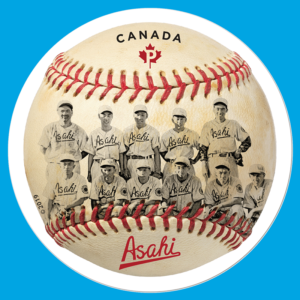 BURNABY, B.C. – Canada Post today released a stamp that honours an amateur Japanese-Canadian baseball team that helped remove racial barriers through sport.
BURNABY, B.C. – Canada Post today released a stamp that honours an amateur Japanese-Canadian baseball team that helped remove racial barriers through sport.
The Vancouver Asahi story is well-known in baseball circles, but the stamp honouring the team is about more than baseball. It also tells a uniquely Canadian story about a dark time in our country’s history – a time of overt racism and fear.
It tells the story of adversity, determination and fortitude – a tragic story that ended in reconciliation and forgiveness.
Formed in 1914, the Asahi thrilled fans and filled Japanese Canadians with hope over almost three decades of play on Vancouver’s east side. The team won many senior league championships before being forced to disband shortly after Canada declared war on Japan in 1941. During the Second World War, Canada interned more than 20,000 people of Japanese descent, most of them Canadian citizens.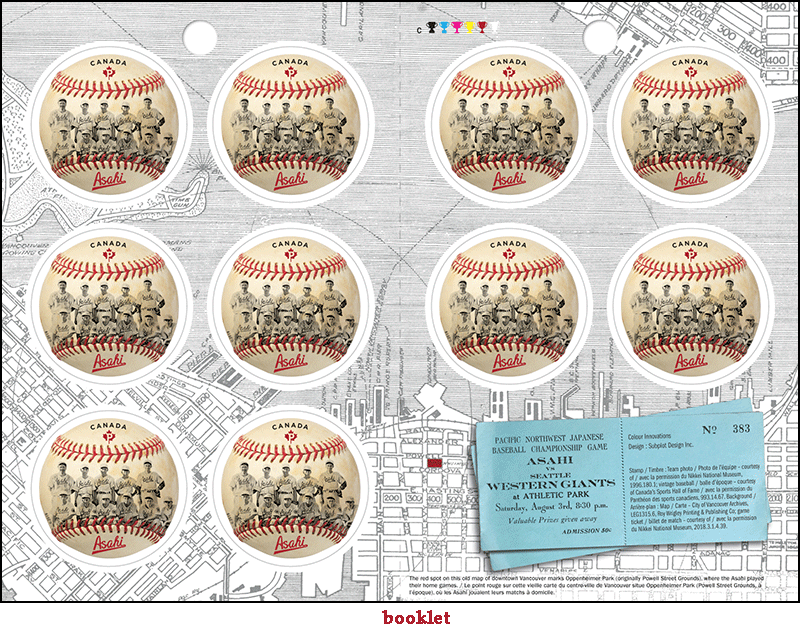
“Canada’s forcible confinement of Japanese-Canadians during the Second World War remains one of the most tragic events in Canadian history,” says the Honourable Carla Qualtrough, Minister of Public Services and Procurement and Accessibility, who is responsible for Canada Post. “This stamp reflects the Asahi’s determination to overcome racism and discrimination through the power of sport. Asahi players exhibited integrity, honour and fair play and were shining examples of what it means to be truly Canadian.”
The Asahi developed a unique style of play to compete against bigger, more powerful teams. Dubbed “brain ball,” it involved bunts, base stealing and squeeze plays to score runs – and wins. Their style of play was so successful that, in 1927, the team won a game 3-1 without technically collecting a hit.
The Asahi grew to near mythic proportions within the Japanese-Canadian community; most boys in Vancouver’s “Little Tokyo” dreamed of playing for the team.
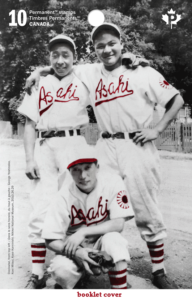 Kaye Kaminishi, a third baseman and the last surviving member of the Vancouver Asahi, helped unveil the stamp at the Nikkei National Museum & Cultural Centre. Ninety-seven today, he was joined by players from the Asahi Baseball Association, which was inspired by the original team.
Kaye Kaminishi, a third baseman and the last surviving member of the Vancouver Asahi, helped unveil the stamp at the Nikkei National Museum & Cultural Centre. Ninety-seven today, he was joined by players from the Asahi Baseball Association, which was inspired by the original team.
The Vancouver Asahi stamp displays 11 Asahi players from the 1940 team, including Kaminishi, who appears in the back row, second from left. Designed by Subplot Inc. of Vancouver, the baseball-shaped stamp is available in booklets of 10. There is also an Official First Day Cover cancelled in Vancouver.
[communiqué]
Le plus récent timbre de Postes Canada rend hommage aux Vancouver Asahi
Le dernier membre encore en vie de l’équipe qui a inventé le brain ball dévoile le nouveau timbre.
BURNABY (C.-B.) – Aujourd’hui, Postes Canada a émis un timbre mettant en vedette une équipe de baseball amateur nippo-canadienne qui a contribué à faire tomber les barrières raciales grâce au sport.
L’histoire des Vancouver Asahi est bien connue dans le monde du baseball, mais le timbre n’est pas simplement un hommage à la célèbre équipe.
Évoquant une période sombre de l’histoire du Canada, il traite aussi d’adversité, de détermination et de courage, et il rappelle des moments tragiques qui ont néanmoins fait place à la réconciliation et au pardon.
Formée en 1914, l’équipe des Asahi a ravi les partisans et donné de l’espoir aux Canadiens d’origine japonaise pendant presque trois décennies dans l’est de Vancouver. L’équipe a remporté de nombreux championnats de la ligue senior, puis a été démantelée après que le Canada ait déclaré la guerre au Japon en 1941. Durant la Seconde Guerre mondiale, le pays a interné plus de 20 000 personnes d’ascendance japonaise, la plupart des citoyens canadiens.
« La détention des Canadiens d’origine japonaise pendant la Seconde Guerre mondiale demeure l’un des événements les plus tragiques de l’histoire du Canada », affirme l’honorable Carla Qualtrough, ministre des Services publics et de l’Approvisionnement et de l’Accessibilité, et ministre responsable de Postes Canada. « Ce timbre témoigne de la détermination des Asahi à vaincre le racisme et la discrimination grâce au pouvoir du sport. Les joueurs des Vancouver Asahi ont fait preuve d’intégrité, d’honneur et d’esprit sportif. Ils sont de brillants exemples de ce que c’est que d’être Canadien. »
Les Asahi ont élaboré un style de jeu unique pour se mesurer à des équipes plus puissantes. Qualifiée de brain ball (jeu astucieux), cette stratégie combinait les amortis, les vols de buts et les squeezes pour marquer des points et remporter des victoires. Elle fonctionnait si bien qu’en 1927, l’équipe a gagné un match 3 à 1 sans jamais vraiment frapper la balle.
 La popularité de l’équipe a pris une ampleur extraordinaire au sein de la communauté nippo-canadienne, et la plupart des garçons du Petit Tokyo de Vancouver rêvaient de faire partie des Asahi.
La popularité de l’équipe a pris une ampleur extraordinaire au sein de la communauté nippo-canadienne, et la plupart des garçons du Petit Tokyo de Vancouver rêvaient de faire partie des Asahi.
Kaye Kaminishi, joueur de troisième but et dernier membre des Vancouver Asahi encore en vie, a participé au dévoilement du timbre au Musée national et centre culturel Nikkei. Aujourd’hui âgé de 97 ans, il était accompagné des joueurs de l’Asahi Baseball Association, une organisation qui s’inspire de l’équipe initiale.
Sur le timbre des Vancouver Asahi, on voit 11 joueurs de l’équipe des Asahi en 1940, dont M. Kaminishi, qui est le deuxième à partir de la gauche, dans la rangée arrière. Conçus par l’entreprise Subplot Design Inc. de Vancouver, les timbres en forme de balle de baseball sont offerts en carnets de 10. Le pli Premier Jour officiel porte la mention « Vancouver BC ».
Added April 25th:
Photos from the unveiling: Ex-Asahi player Kaye Kaminishi points to himself in the stamp design. Three hundred people attended the ceremony.
Ex-Asahi player Kaye Kaminishi points to himself in the stamp design. Three hundred people attended the ceremony. Kaye Kaminishi, actor George Takei and current members of the Asahi team.
Kaye Kaminishi, actor George Takei and current members of the Asahi team.
Takei, himself interned by the U.S. during World War II, took time off from a film shoot in the area. He is best known for playing Ensign Sulu on the original “Star Trek” television series.  Takei and Kaminishi. Photos courtesy Pinpoint National Photography/Canada Post.
Takei and Kaminishi. Photos courtesy Pinpoint National Photography/Canada Post.
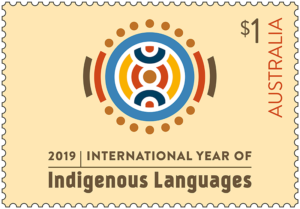 Australia Post is marking the International Year of Indigenous Languages 2019 with a commemorative stamp celebrating the more than 250 indigenous languages in our nation’s history.
Australia Post is marking the International Year of Indigenous Languages 2019 with a commemorative stamp celebrating the more than 250 indigenous languages in our nation’s history.

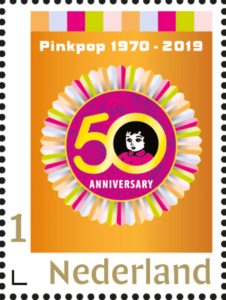 The five stamps on the 50 years of Pinkpop issue depict the special anniversary logo of the popular festival. The typography in the white frame was printed in gold to give the anniversary an extra sparkle. The stamp sheetlet also contains a description of the unique event, with photos and promotional material from the rich history of the past fifty years.
The five stamps on the 50 years of Pinkpop issue depict the special anniversary logo of the popular festival. The typography in the white frame was printed in gold to give the anniversary an extra sparkle. The stamp sheetlet also contains a description of the unique event, with photos and promotional material from the rich history of the past fifty years. BURNABY, BC, April 18, 2019 /CNW/ – Canada Post invites you to the unveiling of the stamp commemorating the Vancouver Asahi baseball team on Wednesday, April 24. The baseball team, made up of Japanese-Canadians, was formed in 1914 and played until 1941.
BURNABY, BC, April 18, 2019 /CNW/ – Canada Post invites you to the unveiling of the stamp commemorating the Vancouver Asahi baseball team on Wednesday, April 24. The baseball team, made up of Japanese-Canadians, was formed in 1914 and played until 1941. BURNABY, B.C. – Canada Post today released a stamp that honours an amateur Japanese-Canadian baseball team that helped remove racial barriers through sport.
BURNABY, B.C. – Canada Post today released a stamp that honours an amateur Japanese-Canadian baseball team that helped remove racial barriers through sport.

 Kaye Kaminishi, a third baseman and the last surviving member of the Vancouver Asahi, helped unveil the stamp at the Nikkei National Museum & Cultural Centre. Ninety-seven today, he was joined by players from the Asahi Baseball Association, which was inspired by the original team.
Kaye Kaminishi, a third baseman and the last surviving member of the Vancouver Asahi, helped unveil the stamp at the Nikkei National Museum & Cultural Centre. Ninety-seven today, he was joined by players from the Asahi Baseball Association, which was inspired by the original team.

 Kaye Kaminishi, actor George Takei and current members of the Asahi team.
Kaye Kaminishi, actor George Takei and current members of the Asahi team. Takei and Kaminishi. Photos courtesy Pinpoint National Photography/Canada Post.
Takei and Kaminishi. Photos courtesy Pinpoint National Photography/Canada Post. Fusiliers du St-Laurent
Fusiliers du St-Laurent 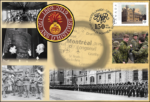 Fusiliers Mont-Royal
Fusiliers Mont-Royal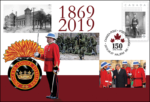 Princess Louise Fusiliers
Princess Louise Fusiliers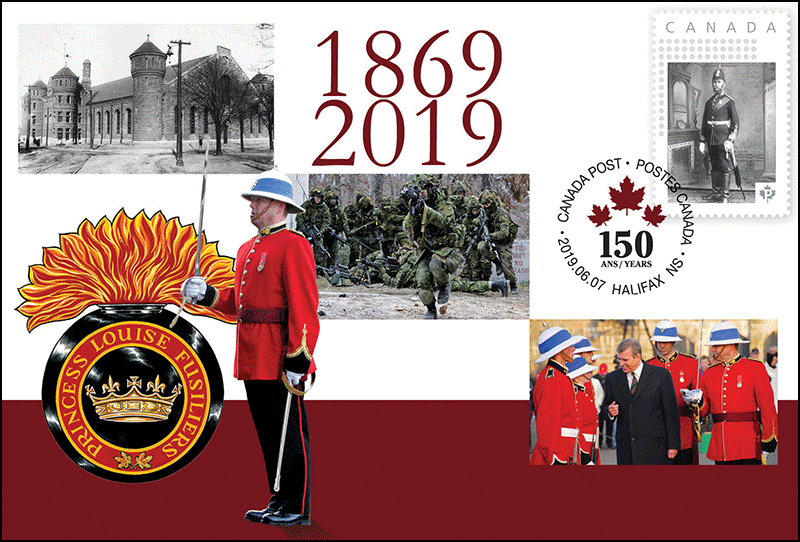
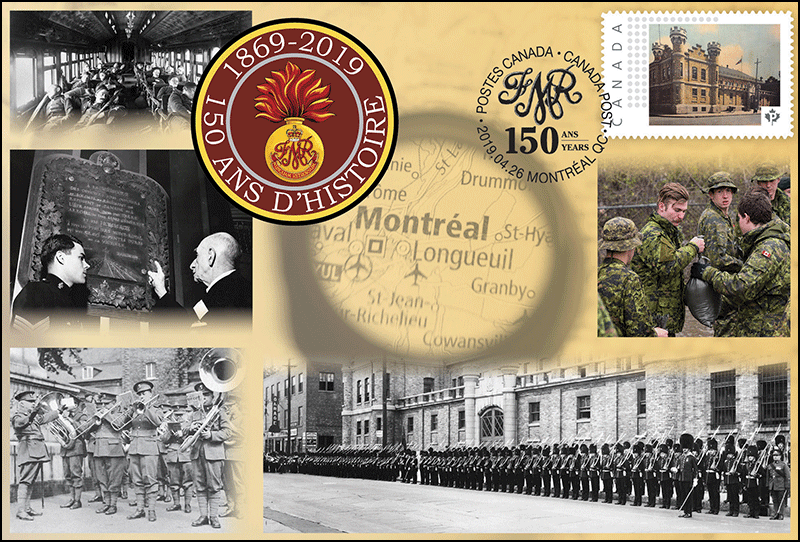
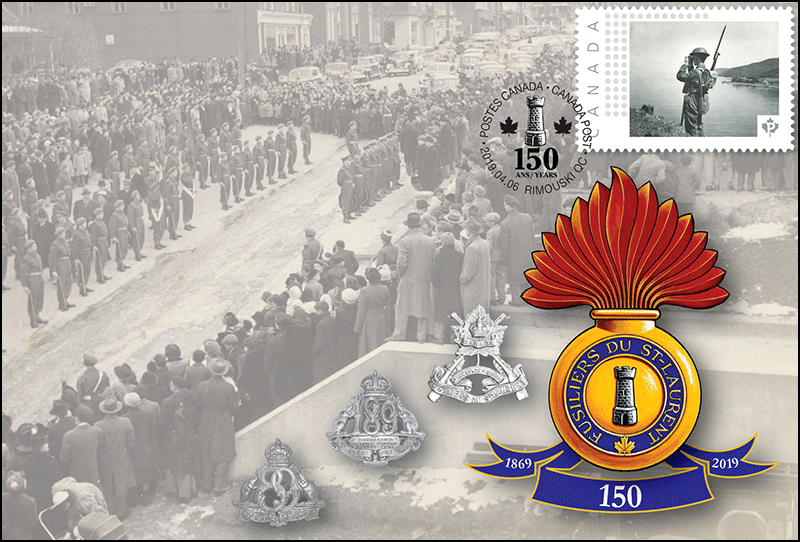
 At the end of the 19th century, there were more than 1,400 covered bridges in rural communities across Canada. Today, only an estimated 140 remain.
At the end of the 19th century, there were more than 1,400 covered bridges in rural communities across Canada. Today, only an estimated 140 remain. Opened in 1901 and covered in 1922, New Brunswick’s Hartland Bridge is the longest of its kind in the world, spanning 391 metres. An engineering marvel, it boasts seven heavy-timber Howe trusses supported by six piers.
Opened in 1901 and covered in 1922, New Brunswick’s Hartland Bridge is the longest of its kind in the world, spanning 391 metres. An engineering marvel, it boasts seven heavy-timber Howe trusses supported by six piers.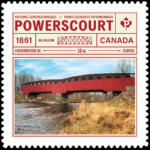 Also known as the Percy Bridge, Quebec’s Powerscourt Bridge, built in 1861, is one of Canada’s oldest covered bridges and the only known example of the McCallum inflexible arched-truss design that is still in existence.
Also known as the Percy Bridge, Quebec’s Powerscourt Bridge, built in 1861, is one of Canada’s oldest covered bridges and the only known example of the McCallum inflexible arched-truss design that is still in existence. The Félix-Gabriel-Marchand Bridge, extending 152 metres from end to end, is Quebec’s longest covered bridge and one of its oldest. Built in 1898, it is unique in the province for its combination of Queen Post and Town lattice trusses.
The Félix-Gabriel-Marchand Bridge, extending 152 metres from end to end, is Quebec’s longest covered bridge and one of its oldest. Built in 1898, it is unique in the province for its combination of Queen Post and Town lattice trusses.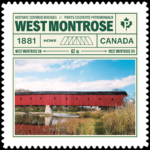 Ontario’s last remaining historic covered bridge, the 60-metre West Montrose Bridge – opened in 1881 over the Grand River – features Howe trusses and louvered window openings.
Ontario’s last remaining historic covered bridge, the 60-metre West Montrose Bridge – opened in 1881 over the Grand River – features Howe trusses and louvered window openings. British Columbia’s Similkameen River, was completed in 1907 and rebuilt in 1926 with its Howe trusses sheathed in wood panelling and cross-bracing exposed overhead. It was converted for automobile use in 1961.
British Columbia’s Similkameen River, was completed in 1907 and rebuilt in 1926 with its Howe trusses sheathed in wood panelling and cross-bracing exposed overhead. It was converted for automobile use in 1961. 
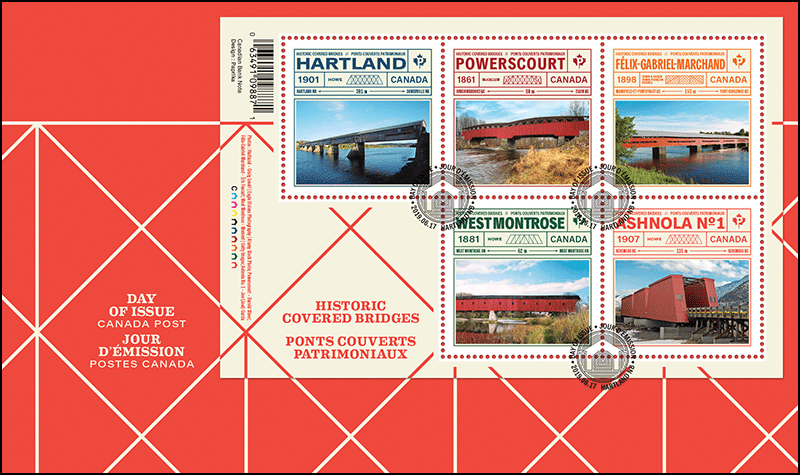
 OTTAWA, June 17, 2019 /CNW/ – Built in a bygone era as vital transportation links spanning rivers, covered bridges are now also portals that invite the imagination back to the age of steam locomotives and horse-drawn buggies.
OTTAWA, June 17, 2019 /CNW/ – Built in a bygone era as vital transportation links spanning rivers, covered bridges are now also portals that invite the imagination back to the age of steam locomotives and horse-drawn buggies.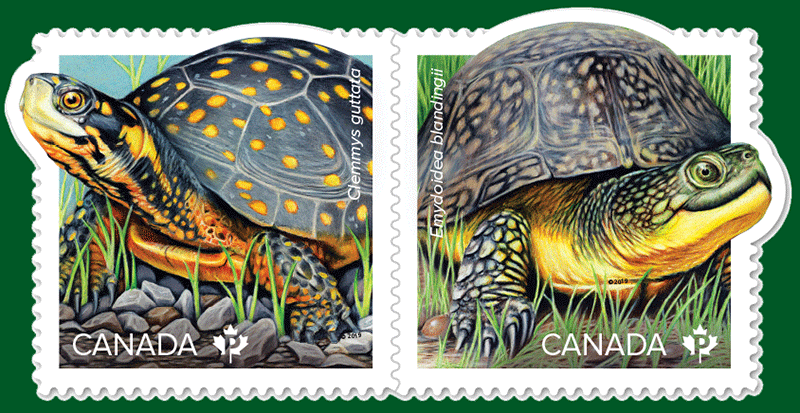 With spring in full swing – and camping, canoeing and cottage life just around the corner – you might soon encounter one of Canada’s eight freshwater turtle species. These stamps showcase two species that have been assessed as endangered by the Committee on the Status of Endangered Wildlife in Canada (COSEWIC).
With spring in full swing – and camping, canoeing and cottage life just around the corner – you might soon encounter one of Canada’s eight freshwater turtle species. These stamps showcase two species that have been assessed as endangered by the Committee on the Status of Endangered Wildlife in Canada (COSEWIC).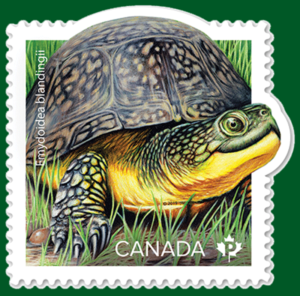 In Canada,
In Canada, 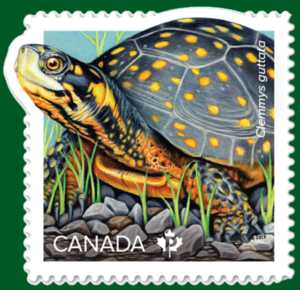 Canadian populations of the
Canadian populations of the 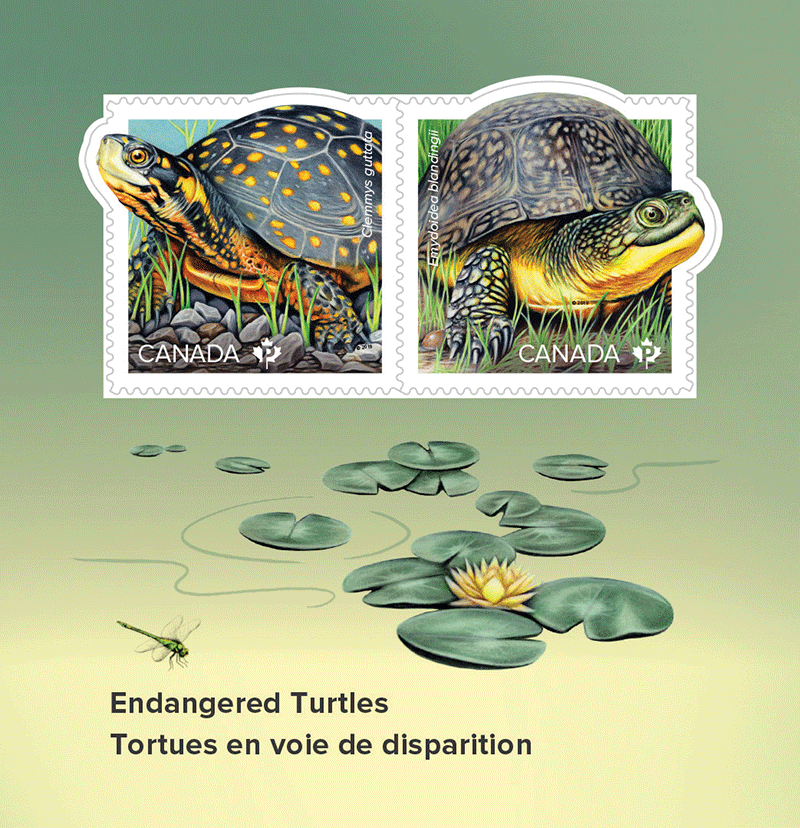
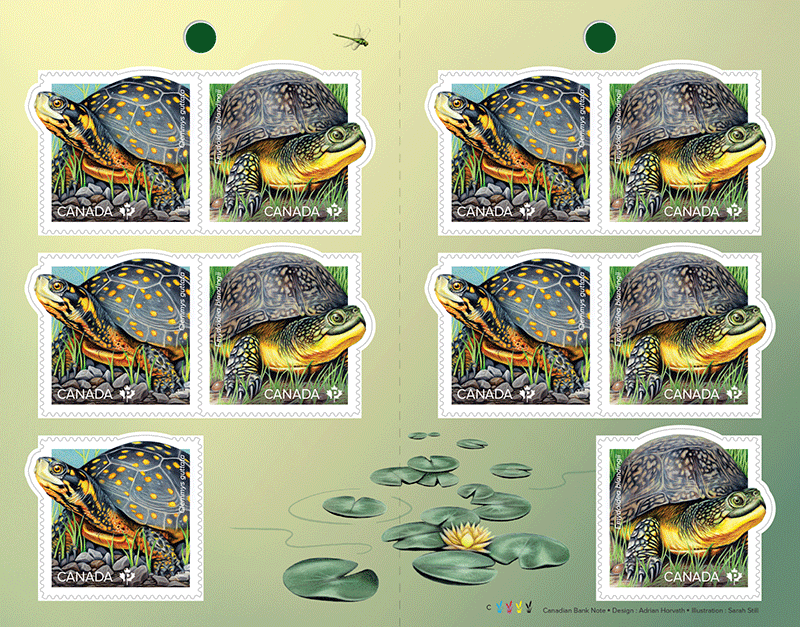
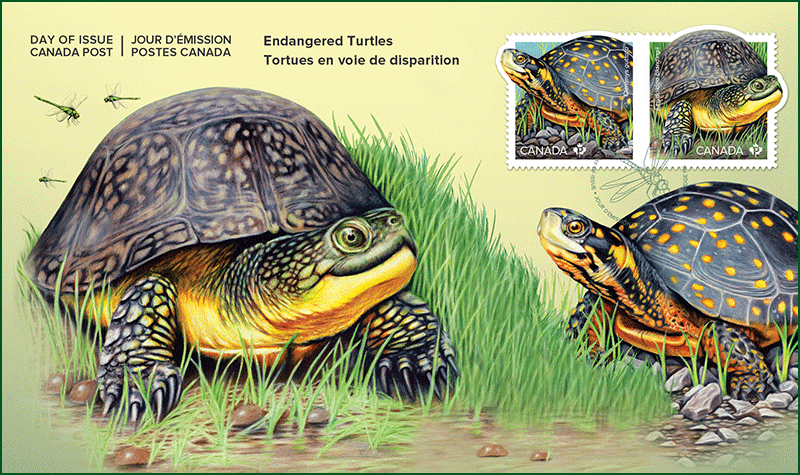

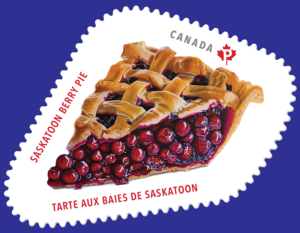 Our country’s traditional desserts offer more than just a scrumptious way to end a meal – their origins are a tasty part of our history. These stamps give you a chance to discover the sweet stories behind some of our favourite treats.
Our country’s traditional desserts offer more than just a scrumptious way to end a meal – their origins are a tasty part of our history. These stamps give you a chance to discover the sweet stories behind some of our favourite treats.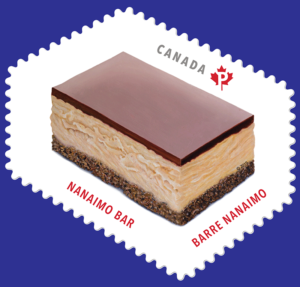 a recipe card-inspired design that shows a truly satisfying slice of creativity.
a recipe card-inspired design that shows a truly satisfying slice of creativity.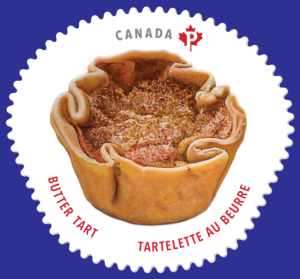 antioxidants. Their name is derived from the Cree word misâskwatômina, which also inspired the name of the city of Saskatoon, meaning “at the Saskatoon berry.”
antioxidants. Their name is derived from the Cree word misâskwatômina, which also inspired the name of the city of Saskatoon, meaning “at the Saskatoon berry.”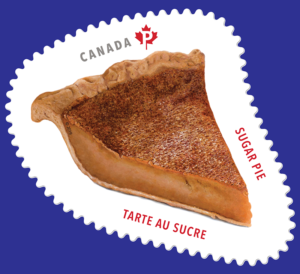 A staple of Quebec patisseries, sugar pie (4) (tarte au sucre) traces its origins to France. Colonists brought the recipe for the pie along with them – but since brown sugar was a rare commodity in New France, early French-Canadian versions used maple syrup as a sweetener.
A staple of Quebec patisseries, sugar pie (4) (tarte au sucre) traces its origins to France. Colonists brought the recipe for the pie along with them – but since brown sugar was a rare commodity in New France, early French-Canadian versions used maple syrup as a sweetener.
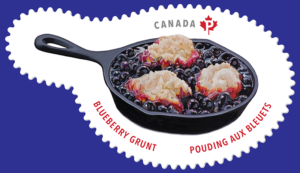

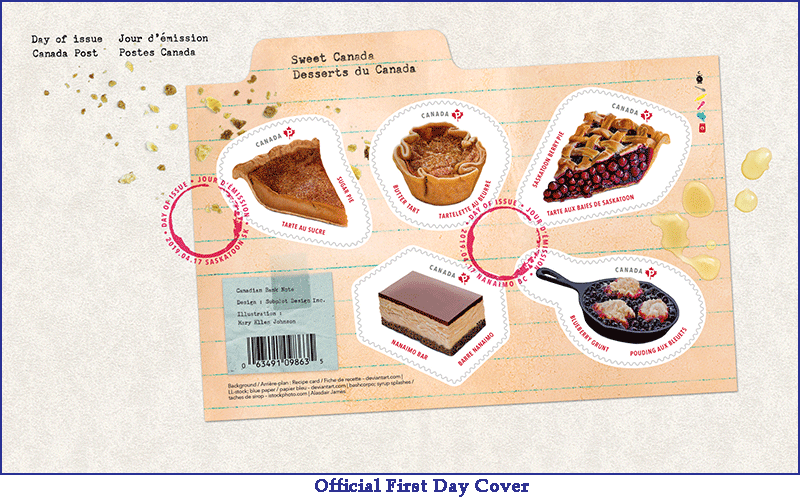

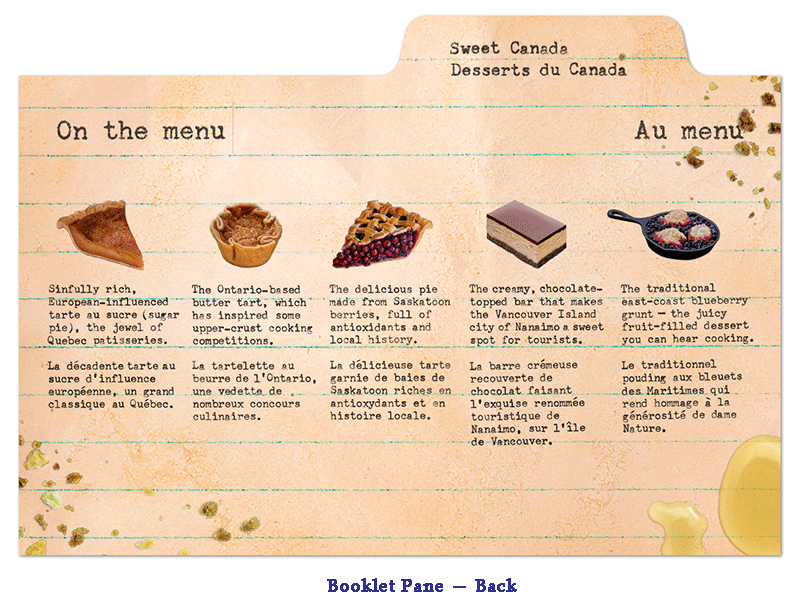
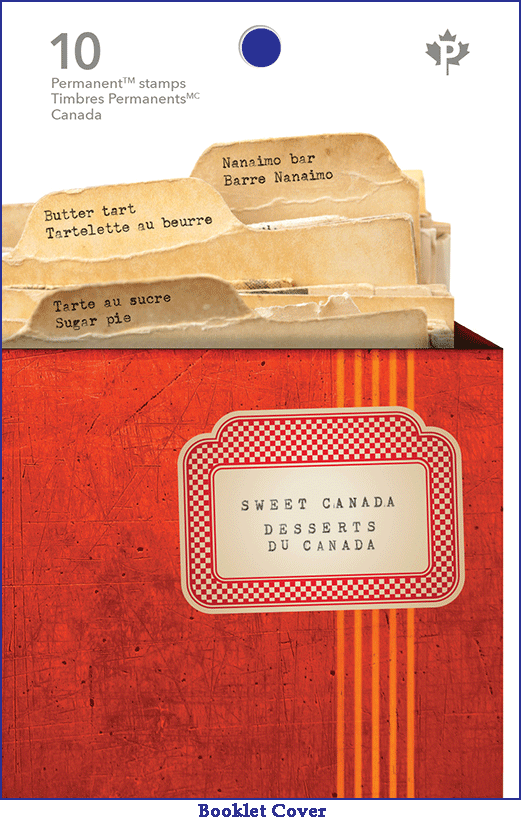
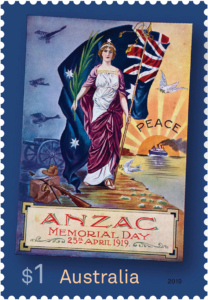 Australia Post is commemorating Anzac Day this year by focusing on the theme of peace in 1919 – the year in which official World War I peace treaties were signed and celebrations, such as Peace Day, occurred throughout the British Empire.
Australia Post is commemorating Anzac Day this year by focusing on the theme of peace in 1919 – the year in which official World War I peace treaties were signed and celebrations, such as Peace Day, occurred throughout the British Empire.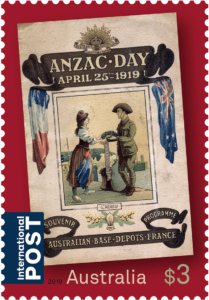 Anzac Memorial Day 1919 souvenir program ($1) published by the Victorian Branch of the Returned Soldiers and Sailors League for Anzac Memorial Day, 1919. The cover artwork by Melbourne firm Goldsworthy and Davey features a figure based on the Roman Goddess of Peace and incorporates both the dark skies of war and the sunny skies of peace.
Anzac Memorial Day 1919 souvenir program ($1) published by the Victorian Branch of the Returned Soldiers and Sailors League for Anzac Memorial Day, 1919. The cover artwork by Melbourne firm Goldsworthy and Davey features a figure based on the Roman Goddess of Peace and incorporates both the dark skies of war and the sunny skies of peace.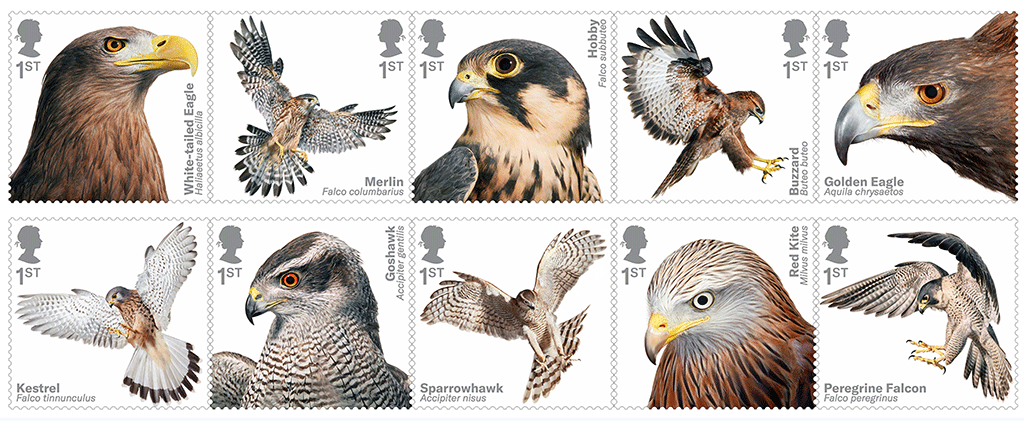 Products/Price/Code
Products/Price/Code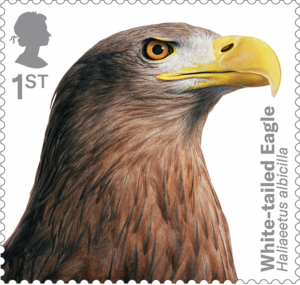 This very large eagle catches fish or sea birds with a low, slow approach, dropping its feet into the water to snatch the prey and then taking it to shore. These eagles were persecuted to extinction by 1918, but in 1975 a release programme was started on R˘m in Scotland. The population in Scotland is now around 60 breeding pairs, with over 200 adult birds. Since eagles readily feed on carrion, they get blamed for killing animals they are unlikely to kill. The financial benefit to Scotland from tourists coming to photograph these stunning birds is approximately £5 million a year.
This very large eagle catches fish or sea birds with a low, slow approach, dropping its feet into the water to snatch the prey and then taking it to shore. These eagles were persecuted to extinction by 1918, but in 1975 a release programme was started on R˘m in Scotland. The population in Scotland is now around 60 breeding pairs, with over 200 adult birds. Since eagles readily feed on carrion, they get blamed for killing animals they are unlikely to kill. The financial benefit to Scotland from tourists coming to photograph these stunning birds is approximately £5 million a year.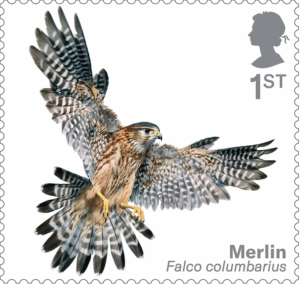 The merlin, which belongs to the falcon family, is the smallest UK raptor and can be found during the spring and summer on the uplands, nesting on the ground underneath heather. A specialist bird-catcher, it feeds its young on larks and meadow pipits in the summer. Females are brown, as are juveniles, while adult males have a blue-grey back. Once the autumn arrives, these birds move to lowlands, in a partial migration, for the winter. Since merlins are fast, agile and small, they are not commonly seen, but energetic young make a spectacular ringing flight after larks.
The merlin, which belongs to the falcon family, is the smallest UK raptor and can be found during the spring and summer on the uplands, nesting on the ground underneath heather. A specialist bird-catcher, it feeds its young on larks and meadow pipits in the summer. Females are brown, as are juveniles, while adult males have a blue-grey back. Once the autumn arrives, these birds move to lowlands, in a partial migration, for the winter. Since merlins are fast, agile and small, they are not commonly seen, but energetic young make a spectacular ringing flight after larks.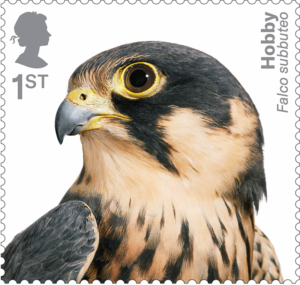 Larger than the merlin, this little falcon migrates to the UK from Africa in the spring to breed. With its long, sickle-shaped wings, it resembles a giant swift and is incredibly nimble in flight. Feeding on dragonflies and other insects, the hobby is often seen near large bodies of water. It nests using abandoned crowsí nests, and during the breeding season it hunts for swallows and swifts to feed its young. Once the young are able to fly and can hunt for themselves, hobbies migrate with the swallows back to Africa.
Larger than the merlin, this little falcon migrates to the UK from Africa in the spring to breed. With its long, sickle-shaped wings, it resembles a giant swift and is incredibly nimble in flight. Feeding on dragonflies and other insects, the hobby is often seen near large bodies of water. It nests using abandoned crowsí nests, and during the breeding season it hunts for swallows and swifts to feed its young. Once the young are able to fly and can hunt for themselves, hobbies migrate with the swallows back to Africa.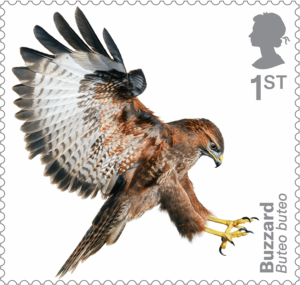 By the 1970s, the common (or Eurasian) buzzard was rare in the UK other than in the far west. Since then, however, there has been a huge increase thanks to more nesting areas and to rabbits surviving myxomatosis, and buzzards are now breeding in every county. Buzzards are usually seen on fi ne days soaring and calling, with a mewing cry, or sitting on poles, on fences by roads or on the ground, particularly when ploughed in the winter. They scavenge roadkill, which can cause them traffic injuries, or feed on insects on the ground. There is enormous colour variation in this species, from almost all cream to very dark brown.
By the 1970s, the common (or Eurasian) buzzard was rare in the UK other than in the far west. Since then, however, there has been a huge increase thanks to more nesting areas and to rabbits surviving myxomatosis, and buzzards are now breeding in every county. Buzzards are usually seen on fi ne days soaring and calling, with a mewing cry, or sitting on poles, on fences by roads or on the ground, particularly when ploughed in the winter. They scavenge roadkill, which can cause them traffic injuries, or feed on insects on the ground. There is enormous colour variation in this species, from almost all cream to very dark brown.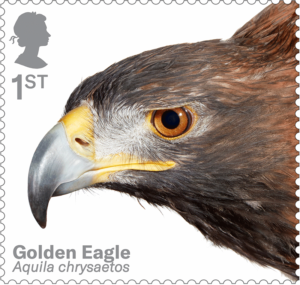 The golden eagle prefers remote moorlands and mountains in Scotland, usually nesting on cliff ledges. It soars over the Highlands, catching rabbits, hares and birds with its very powerful feet. It also consumes carrion, in some areas being reliant on dead animals during the winter. Golden eagles pair for life. Of the two eggs that the female lays, one chick rarely survives, the other fl edging at about three-and-a-half months. Juveniles have a mottled white and brown tail with a black band, which turns brown over the years. The golden feathers that give this eagle its name are on the head and the neck.
The golden eagle prefers remote moorlands and mountains in Scotland, usually nesting on cliff ledges. It soars over the Highlands, catching rabbits, hares and birds with its very powerful feet. It also consumes carrion, in some areas being reliant on dead animals during the winter. Golden eagles pair for life. Of the two eggs that the female lays, one chick rarely survives, the other fl edging at about three-and-a-half months. Juveniles have a mottled white and brown tail with a black band, which turns brown over the years. The golden feathers that give this eagle its name are on the head and the neck.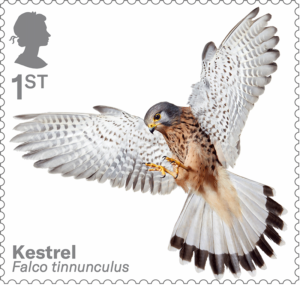 Once the UKís most common raptor, observed hovering by roads and motorways, this falcon has seen a decrease of 40 per cent over the past two decades. A key reason for the decline is the lack of sufficient nest sites and suitable grasslands for hunting. Kestrels are characterised by a beautiful chestnut-red colour over their bodies. The female has a red tail with bars, while the adult male has a grey head and grey tail with a black band at its tip. These birds are best known for hunting mice and voles by hovering, often descending in stages to drop on their prey.
Once the UKís most common raptor, observed hovering by roads and motorways, this falcon has seen a decrease of 40 per cent over the past two decades. A key reason for the decline is the lack of sufficient nest sites and suitable grasslands for hunting. Kestrels are characterised by a beautiful chestnut-red colour over their bodies. The female has a red tail with bars, while the adult male has a grey head and grey tail with a black band at its tip. These birds are best known for hunting mice and voles by hovering, often descending in stages to drop on their prey.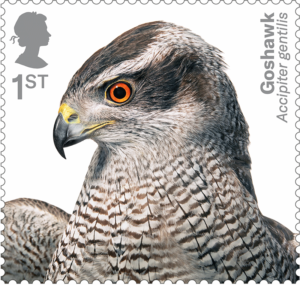 This aggressive, forest-dwelling hunter was probably extinct as a breeder until the middle of the 20th century. Its wing shape allows it to twist and turn through trees, and its long legs and powerful feet are well suited to hunting birds and mammals up to the size of a hare, with a short, often surprise attack. Adults are grey and white, with fi ne horizontal bars on the breast, while juveniles are brown, with vertical brown stripes. Goshawks build large stick nests and lay up to four eggs. The parents are vocal in the spring, when they can sometimes be seen soaring high in good weather.
This aggressive, forest-dwelling hunter was probably extinct as a breeder until the middle of the 20th century. Its wing shape allows it to twist and turn through trees, and its long legs and powerful feet are well suited to hunting birds and mammals up to the size of a hare, with a short, often surprise attack. Adults are grey and white, with fi ne horizontal bars on the breast, while juveniles are brown, with vertical brown stripes. Goshawks build large stick nests and lay up to four eggs. The parents are vocal in the spring, when they can sometimes be seen soaring high in good weather.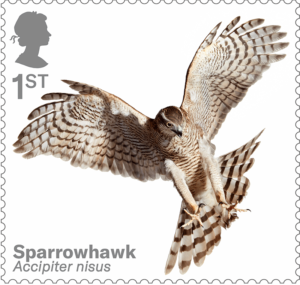 This little hawk is most commonly seen in gardens catching small birds. Its defining features are very long, thin legs and yellow eyes. Males are tiny in comparison to females. Both hunt birds, but females can take birds up to the size of a pigeon. The sparrowhawk is often blamed, wrongly, for the demise of small birds, while in fact it is cats, cars, windows and pesticides that are responsible. Sparrowhawks build a stick nest and rear up to five young. The young grow swiftly and become independent by the age of 14 weeks, although onlyabout a third survive their first year.
This little hawk is most commonly seen in gardens catching small birds. Its defining features are very long, thin legs and yellow eyes. Males are tiny in comparison to females. Both hunt birds, but females can take birds up to the size of a pigeon. The sparrowhawk is often blamed, wrongly, for the demise of small birds, while in fact it is cats, cars, windows and pesticides that are responsible. Sparrowhawks build a stick nest and rear up to five young. The young grow swiftly and become independent by the age of 14 weeks, although onlyabout a third survive their first year.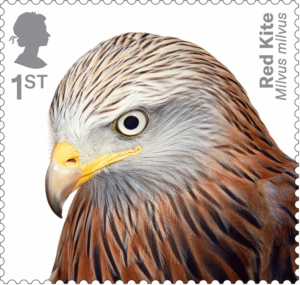 By 1903, red kites had been persecuted close to extinction, with the last few remaining in the mountains of Wales, when a farmer started to feed them. Now, with four feeding stations, there are 900 pairs in Wales. There have been very successful translocation programmes in England, Scotland and Northern Ireland, so kites are now seen soaring together in many places. Long wings, a long, forked tail and red colour make the red kite easy to identify. These birds are mainly scavengers, feeding on roadkill and animal remains. They have small feet for their body size, which limits the prey they can catch.
By 1903, red kites had been persecuted close to extinction, with the last few remaining in the mountains of Wales, when a farmer started to feed them. Now, with four feeding stations, there are 900 pairs in Wales. There have been very successful translocation programmes in England, Scotland and Northern Ireland, so kites are now seen soaring together in many places. Long wings, a long, forked tail and red colour make the red kite easy to identify. These birds are mainly scavengers, feeding on roadkill and animal remains. They have small feet for their body size, which limits the prey they can catch.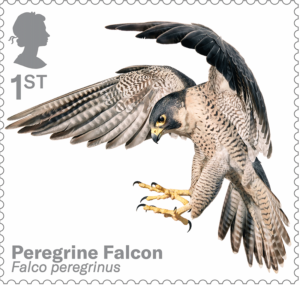 Brought to low numbers by pesticides in the middle of the 20th century, the peregrine has recovered dramatically. Many peregrines are now urban birds, nesting on cathedrals, other tall buildings and bridges. Probably the fastest living creature, the peregrine hunts birds up to the size of large gulls, almost always on the wing. It has a short tail and long, pointed wings. The juveniles are brown, while the adults have a grey-blue back. In the UK, these birds are sedentary, but peregrines in other areas can be migratory, and they are the most widely spread raptors worldwide.
Brought to low numbers by pesticides in the middle of the 20th century, the peregrine has recovered dramatically. Many peregrines are now urban birds, nesting on cathedrals, other tall buildings and bridges. Probably the fastest living creature, the peregrine hunts birds up to the size of large gulls, almost always on the wing. It has a short tail and long, pointed wings. The juveniles are brown, while the adults have a grey-blue back. In the UK, these birds are sedentary, but peregrines in other areas can be migratory, and they are the most widely spread raptors worldwide. Dassault Mirage IIICj
Dassault Mirage IIICj
 ATM Rates:
ATM Rates:

